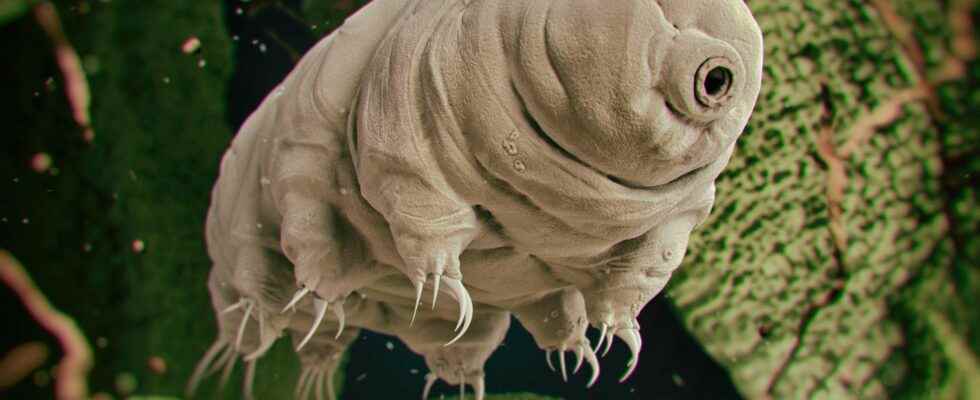They are known to be true creatures of the extreme: tardigrades survive in particularly hostile environments, some species even resist the vacuum of space! And a new study has just attributed a new feat to them: that of resisting intense dehydration.
You will also be interested
[EN VIDÉO] Tardigrades, superheroes of the microscopic world With their chubby bodies and little clawed feet, tardigrades are among the cutest creatures in the microscopic world. But don’t be fooled by appearances: their plump rolls hide the stuff of real superheroes.
In the vacuum of space, under pressures phenomenal, at temperatures close to the absolute zero or conversely very high…, the tardigrades, from the top of their size of a millimeter, resist everything! Especially at a state of dehydration intense, according to a study recently published in Plos Biology. Tardigrades enter a metabolic state, researchers explain reversible called anydrobiosis: their vital functions are then almost completely stopped, but if the humidity then returns, all the metabolism restarts.
A process that the team of biologists wanted to deepen: they first used a solvent chemical, trifluoroethanol, in order to reproduce dehydration conditions on tardigrades. Then, after many manipulations, they managed to identify protein surrounding the little creatures, and forming a kind of protective gel around them.
“It is believed that when water leaves a cell, some kind of protein must help the cell maintain its strength. physical to avoid collapsing on itself, said Takekazu Kunieda in a communicatedco-author of the study and Associate Professor at the University of Tokyo. After testing several different types, we found that the abundant soluble cytoplasmic proteins in the heat (Cahs) unique to tardigrades, are responsible for protecting their cells against dehydration.”
CAHS proteins that form gel-like filaments when a cultured human cell undergoes dehydration. © A Tanaka and T Kunieda
Challenges for future medicine
These identified proteins form like a cytoskeleton composed of gel-like filaments, when the cell containing them becomes dehydrated. In this way, they protect it from mechanical stresses that could break it. A reversible process: when the cell recovers water, the filaments withdraw. However, the protein Cahs are unique to tardigrades although, according to the study, “proteins with similar properties could be present in other organisms tolerant to the desiccation and contribute to the resistance to stress “. A major challenge for science, because such a mechanism would in particular make it possible to better preserve certain drugs.
That awkward moment when something’s stuck to your foot and you can’t get it off ????#Awkward#Tardigrade#WaterBearpic.twitter.com/dA78HK0XZG
— Kita Marie Williams (@SeaSpongeCake) August 31, 2022
Interested in what you just read?
